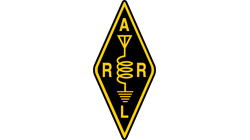 The Federal Communications Commission has removed certain restrictions on ham radio operators, acting on a request that the ARRL made a decade ago.
The Federal Communications Commission has removed certain restrictions on ham radio operators, acting on a request that the ARRL made a decade ago.
“The amateur radio community can play a vital role in emergency response communications but is often unnecessarily hindered by the baud rate limitations in the rules,” the commission said in its order.
We previewed this change a couple of weeks ago; now the commission has made it official. It said the changes to the technical rules for data communications will “incentivize innovation and experimentation in the amateur radio bands by removing outdated restrictions and providing licensees with the flexibility to use modern digital emissions.”
The report and order eliminates the baud rate limitation — the rate at which the carrier waveform amplitude, frequency and/or phase is varied to transmit information — in certain amateur bands.
The change was requested in 2013 by the National Association for Amateur Radio (ARRL), and the FCC released a notice of proposed rulemaking about it in 2016.
David Siddall, general counsel for ARRL, told Radio World last month: “This is a very simple change. In 1980, at the inception of digital technologies that could be used by radio amateurs, the FCC adopted a speed limit of 300 baud for the stated purpose of limiting the amount of spectrum occupied by any single signal,” Siddall said. “Radio amateurs, being tinkerers and experimenters, worked to develop faster and faster speeds that still fit within the standard spectrum bandwidth. Eventually their innovations to the technology significantly increased spectrum efficiency but ran up against the FCC baud rate limit.”
Bands with a 300 baud rate limitation eliminated by this order are the 160 meter band; 80 meter band; 40 meter band segments 7.000–7.100 MHz and 7.100–7.125 MHz; 30 meter band; 20 meter band segment 14.00–14.15 MHz; 17 meter band segment 18.068–18.110 MHz; 15 meter band segment 21.0–21.2 MHz; and 12 meter band segment 24.89–24.93 MHz. The 10 meter band segment 28.0–28.3 MHz has a 1200 baud rate limitation, which is also lifted.
“Instead, the commission establishes a 2.8 kHz bandwidth limitation in the applicable amateur radio bands,” it said.
“The changes will enable the amateur radio community to operate more efficiently, including in support of emergency situations when appropriate, and foster experimentation, which is a core principle of the amateur radio service.”
ARRL told the commission earlier that amateurs worldwide have informally adopted the 2.8 kHz bandwidth for popular types of digital data transmission on HF frequencies “at least in part because all amateur HF transceivers with voice capabilities already are equipped with the filters and/or software for this bandwidth,” according to the FCC summary. A 2.8 kilohertz bandwidth limitation is also commonly used for both data and voice transmissions.
Among those who had expressed support for eliminating the baud rate limitation were several state public safety organizations that said they rely on effective amateur radio to provide critical initial information in areas cut off from traditional modes of communication.
ARRL has said that increasing speed is especially important when amateurs volunteer to help during and after disasters.
The commission noted that a few commenters opposed any rule change, “arguing that the existing rules should be retained in order to protect access to amateur bands by Morse code and other narrowband transmissions.”
But the FCC said its decision does not restrict or promote any particular use. “Amateur licensees engaging in Morse code transmissions will continue to be able to use the amateur bands for such transmissions. However, amateur frequencies are not assigned for the exclusive use of any station. Rather, each station licensee and each control operator must cooperate in selecting transmitting channels and in making the most effective use of the amateur service frequencies.”
The commission may not be finished. It is also considering removing the baud rate limitation in the VHF and UHF bands and in the 2200 and 630 meter band. It asked for comment on that idea and on the appropriate bandwidth limitation for those bands, issuing a further notice of proposed rulemaking.










